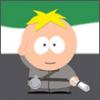Thank you for response, guys.
Out of curiosity, why don't you use the sprite fonts that are part of XNA.
Anyways, I took a look at more detail. I thought it might have been a slightly reduced image, but the final image and the original font both show the Capital 'M' at 10 pixels tall.
However, this looks like compression artifacts. I.e. when it was saved, it may have included a small decompression like PNG/JPG would use. Or it could be from the loading process. I haven't used DX font loading of any type, so I'm not sure exactly how it should work, but that really looks like compression artifacts.
I'm creating my own C++ rendering engine for the sake of learning DX11. Not sure if XNA sprite fonts can be used in such application.
I don't think it is caused by image compressing in my case, since DDS file, generated from image (which I receive uncompressed) looks precise and has no artefacts. However, It is possible that this behavior is caused by loading mechanism. In my engine, I use DDS loader, provided by new Microsoft D3D11 tutorials. I'll create plane with size of the font texture and check if this behavior keeps bubbling up even for sole plane mesh, thanks for pointing that out.
Are you sure of your texture coordinate and your vertex coordinates ? I had a similar issue with OpenGl, and I had to correct the texture coordinates. It was years ago though, so I cannot be more accurate.
Well, I'm absolutely sure about generated vertex coordinates and that I load and set correct texture coordinates from font description file, generated by one of my tools. At first glance, texture coordinates and width of every character, obtained from this tool are legit. The whole mechanism of generating data from PNG file in this tool is just about getting start pixel and end pixel of each symbol and dividing those values by width of the file, so it's pretty clear and simple.









